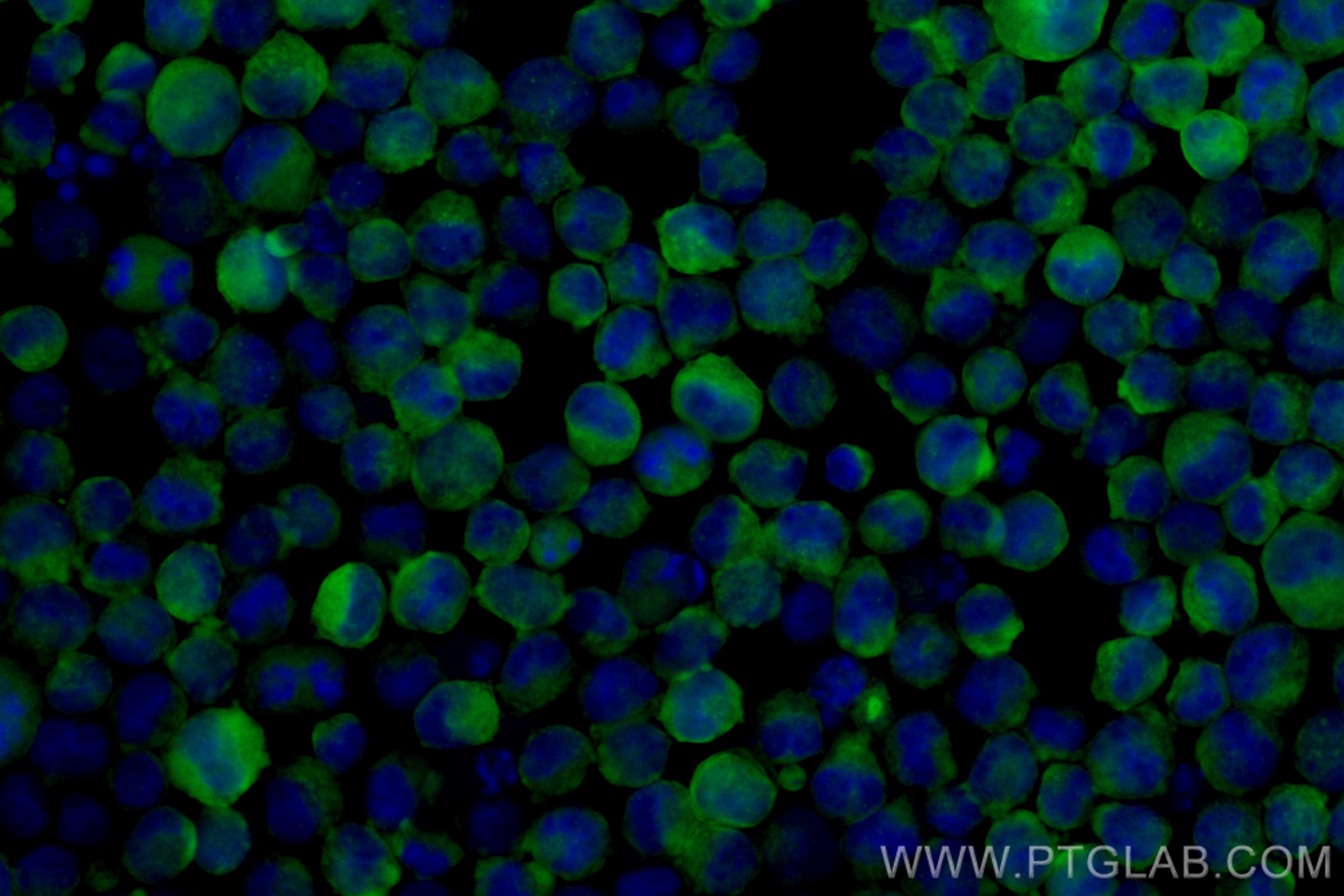Anticorps Recombinant de lapin anti-CD71
CD71 Recombinant Antibody for IF/ICC
Hôte / Isotype
Lapin / IgG
Réactivité testée
Humain
Applications
IF/ICC
Conjugaison
CoraLite® Plus 488 Fluorescent Dye
CloneNo.
2P14
N° de cat : CL488-81793-2
Synonymes
Galerie de données de validation
Applications testées
| Résultats positifs en IF/ICC | cellules K-562, |
Dilution recommandée
| Application | Dilution |
|---|---|
| Immunofluorescence (IF)/ICC | IF/ICC : 1:50-1:500 |
| It is recommended that this reagent should be titrated in each testing system to obtain optimal results. | |
| Sample-dependent, check data in validation data gallery | |
Informations sur le produit
CL488-81793-2 cible CD71 dans les applications de IF/ICC et montre une réactivité avec des échantillons Humain
| Réactivité | Humain |
| Hôte / Isotype | Lapin / IgG |
| Clonalité | Recombinant |
| Type | Anticorps |
| Immunogène | CD71 Protéine recombinante Ag0123 |
| Nom complet | transferrin receptor (p90, CD71) |
| Masse moléculaire calculée | 85 kDa |
| Poids moléculaire observé | 90 kDa |
| Numéro d’acquisition GenBank | BC001188 |
| Symbole du gène | CD71 |
| Identification du gène (NCBI) | 7037 |
| Conjugaison | CoraLite® Plus 488 Fluorescent Dye |
| Excitation/Emission maxima wavelengths | 493 nm / 522 nm |
| Forme | Liquide |
| Méthode de purification | Purification par protéine A |
| Tampon de stockage | PBS with 50% glycerol, 0.05% Proclin300, 0.5% BSA |
| Conditions de stockage | Stocker à -20 °C. Éviter toute exposition à la lumière. Stable pendant un an après l'expédition. L'aliquotage n'est pas nécessaire pour le stockage à -20oC Les 20ul contiennent 0,1% de BSA. |
Informations générales
CD71, also known as transferrin receptor protein 1 (TfR1), is a transmembrane glycoprotein composed of two disulfide-linked monomers, each of 90 kDa molecular weight. Each monomer binds one holo-transferrin molecule creating an iron-Tf-TfR complex that enters the cell by endocytosis. CD71 is present on actively proliferating cells and is essential for iron transport into proliferating cells.
Protocole
| Product Specific Protocols | |
|---|---|
| IF protocol for CL Plus 488 CD71 antibody CL488-81793-2 | Download protocol |
| Standard Protocols | |
|---|---|
| Click here to view our Standard Protocols |


